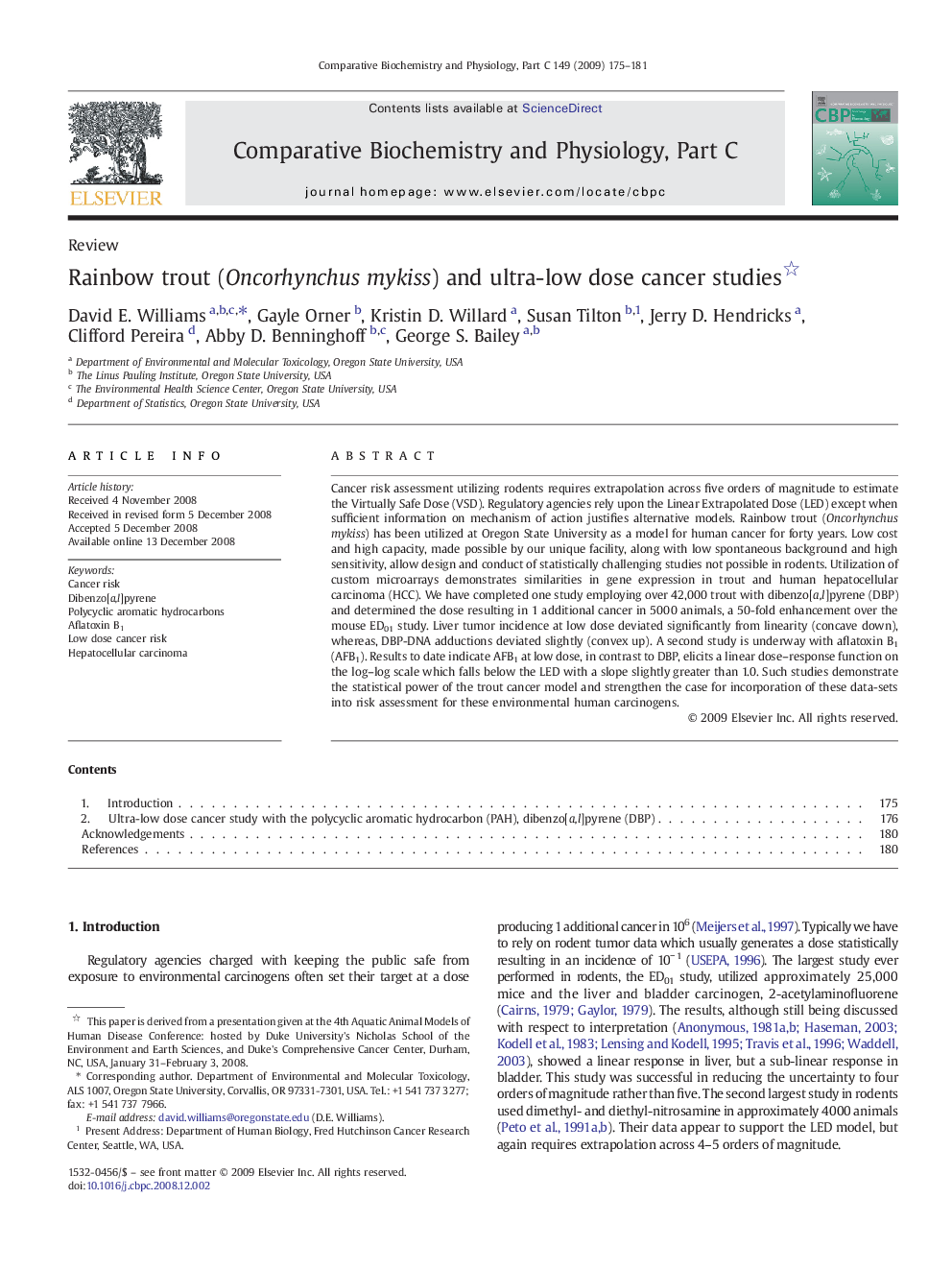| Article ID | Journal | Published Year | Pages | File Type |
|---|---|---|---|---|
| 1977511 | Comparative Biochemistry and Physiology Part C: Toxicology & Pharmacology | 2009 | 7 Pages |
Cancer risk assessment utilizing rodents requires extrapolation across five orders of magnitude to estimate the Virtually Safe Dose (VSD). Regulatory agencies rely upon the Linear Extrapolated Dose (LED) except when sufficient information on mechanism of action justifies alternative models. Rainbow trout (Oncorhynchus mykiss) has been utilized at Oregon State University as a model for human cancer for forty years. Low cost and high capacity, made possible by our unique facility, along with low spontaneous background and high sensitivity, allow design and conduct of statistically challenging studies not possible in rodents. Utilization of custom microarrays demonstrates similarities in gene expression in trout and human hepatocellular carcinoma (HCC). We have completed one study employing over 42,000 trout with dibenzo[a,l]pyrene (DBP) and determined the dose resulting in 1 additional cancer in 5000 animals, a 50-fold enhancement over the mouse ED01 study. Liver tumor incidence at low dose deviated significantly from linearity (concave down), whereas, DBP-DNA adductions deviated slightly (convex up). A second study is underway with aflatoxin B1 (AFB1). Results to date indicate AFB1 at low dose, in contrast to DBP, elicits a linear dose–response function on the log–log scale which falls below the LED with a slope slightly greater than 1.0. Such studies demonstrate the statistical power of the trout cancer model and strengthen the case for incorporation of these data-sets into risk assessment for these environmental human carcinogens.
